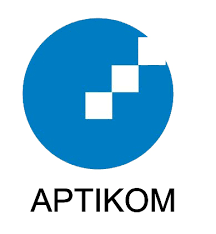Optimal Size And Font For Mobile Learning
DOI:
https://doi.org/10.18196/eist.v3i1.16895Keywords:
Font, Mobile Learning, TypefaceAbstract
The study of fonts encompasses not only the expression of letter forms but also other aspects of readability and appearance. The necessity for additional font references for mobile learning heightens the importance of the font selection issue. Because many writers want their readers to feel comfortable and at ease when reading their work, study on this font is necessary because if the font size on a mobile phone is too large or too tiny, it becomes unpleasant. This research aims to examine the varieties of fonts that feels comfortable, appropriate, and clear for mobile learning material. This study employed a survey-based data-gathering method. Research on fonts such as Garamond, Gill Sans, Cambria, Kalibri, Constantia, Lato, and Georgia with sizes 10, 12, 14, 16, 18, 20, 22, 24, 26, and 28 and short to lengthy phrases revealed that Georgia was recommended for small and medium size fonts with sizes 10 to 22. For greater font sizes, however, Garamond was suggested with a size of 26.
References
Intangible, N. (2010). Artikel. “Letter Perception: Font Selection Concept”. (In Indonesian)
Sridati. (2019). Artikel. “Definition of Fonts”. (In Indonesian)
Kliever, J. (2018). Artikel. “The 20 Best and Worst Fonts to Use on Your Resume”. (In Indonesian)
Sas, D. E. (2014). Artikel. “Types of Fonts for Creating Scientific Works”. (In Indonesian)
Febri, B. (2016). Artikel. “The Perfect Font Combination For Your Website”. (In Indonesian)
Leavitt, M. S. (2013). “Research-Based Web Design & Usability Guidelines”.
E., R. (2014). Jurnal. “Interface Design Analysis and Ease of Use”. (In Indonesian)
Alhafidz, A. R. (2014). Artikel. “Recognize Font Types”. (In Indonesian)
Sholeh, M. (2020). Artikel. “Recognize Types Of Fonts And Combine Them On Landing Pages”. (In Indonesian)
Andre. (2013). Artikel. “CSS Learning Tutorial Part 11: Get to Know the Unit of Value (Value)”. (In Indonesian)



